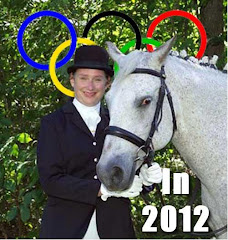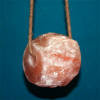Hoof beats to Healing - Autism Therapeutic Horses
Saturday, April 25, 2009
Horse Health for Autistic Riders
"At Utah’s Hoofbeats to Healing, Missouri Fox Trotters are doing their part to help special-needs children overcome life’s obstacles. Together, they’re having fun and winning awards."
This group of gentle "angel" horses and their people are bringing joy to special needs people in a very special way.
"When Tami Tanner talks about her Utah-based Hoofbeats to Healing program, she puts forth theories about “balancing the brain” and “applying gaits to the brain neurologically.” But parents
such as Carolynn Hulbert aren’t overly concerned with medical terminology or fancy assumptions about the effects of riding Missouri Fox Trotters.
Instead, Hulbert focuses on her son Travis’ success since joining the Hoofbeats program – success he hadn’t achieved in working with other therapeutic- riding curriculums. “The first time I brought him here, Tami had him ride with a lead-walker,” Hulbert recalls. “He’d been riding for 10 years at that point, and I certainly didn’t think he needed a lead-walker. But after
10 minutes, Tami stopped him and looked at his eyes. They were dilated, so she could tell there was something going on in his brain neurologically. The dilation meant that his brain was downloading the patterning of the horse’s gait.”
“Downloading that patterning can reveal the rider’s emotional, physical and neurological issues,” Tanner explains, “making it seem like the rider’s getting worse, not better.”
“We were just about to give up, but Tami kept telling Travis to hang in there,” Hulbert says. “Sure enough, one day he had a breakthrough, and everything worked. He’s been going steadily uphill ever since.”
Read the rest of the Western Horseman article.
And then go follow Tamtrot on Twitter - to keep updated on all the fun!
Friday, April 24, 2009
Talking about the World's Smallest Horse
 By completing a Google Search you will find many more references to
By completing a Google Search you will find many more references toThumbelina - officially the world’s smallest horse
I just read the most fascinating article. I knew there are breeds of miniature horses. A previous boss I had raised minis and took them to fairs and events. The picture on the right is what caught my eye. I have included the story so you can read the details as well.
"She may be small, a mere 17 inches and weighing only 60 pounds. But she is all horse. Born as a dwarf to a miniature horse, Thumbelina is officially the world’s smallest horse.
She may never aspire to be a champion show-jumper – she is so tiny she would find it hard to jump over a bucket. But these things matter little to the feisty Thumbelina, who has been officially recognized as the world’s smallest horse.
That title was conferred on her in 2006 when the five-year-old entered the Guinness Book of Records. The real-life My Little Pony was born on an American farm to a couple who specialize in breeding miniature horses. Normally these horses weight about 250lb and rise to a height of 34 inches when they are fully grown.
But from the day she was born it was clear that tiny Thumbelina would never grow to that size.
She weighed in at only 8lb – the size of a new-born baby - when she was born. Eventually she grew to just 60lb. Her amazing size has been explained as dwarfism. This makes her a miniature of a miniature.
She may be a mini-horse, but small means beautiful as far as her owners, the Goessling family in Goose Creek farm in St. Louis, are concerned. She likes to hang out with the cocker spaniels rather than the other horses on their 150-acre farm.
“When she was born, she was so small we thought she wasn’t going to make it. She looked very ill. We feared the worse. Because her legs are proportionally smaller than her body and her head, she has to wear orthopaedic fittings to straighten them out a lot of the time. But we love her and wouldn’t want her any other way,” said Michael Goessling, whose parents Kay and Paul bred the miniature horses.
She only measures up to the shins of the normal-sized horses in the paddock.
Michael’s parents have bred hundreds of miniature horses, but they have never had one as small as Thumbelina. She has become something of a celebrity in her home town in America.
She lives on a cup of grain and a handful of hay, served twice a day. She is expected to live to the age of 17 years because of her size – normal horses live for about 35 years.
“She was just a complete fluke and we call her a mini mini. She is too precious to sell. I think my parents would sell me before they part with Thumbelina. She has that special Wow factor, which you only get when you see how small she really is,” said Michael.
While she has the ability to get pregnant and give birth, the Goessling family have decided not to allow this to happen.
There could be complications during the pregnancy, they believe, so it is better to avoid the risks. And also they don‘t feel it is right that the gene which creates dwarfism in horses be carried on through future generations. "
Visit World's Smallest Horse


Wednesday, April 22, 2009
Equine Teleseminars - Interviews with Amazing Experts in the Field
Included in the archives are interviews with Linda Tellington-Jones, Jane Savoie, Douglas Emerson, Delores Arste.
You will want to get on the list to find out who is being interviewed next!
EquineTeleseminars.net
Monday, April 20, 2009
POLO HORSES DIE - CNN coverage
Blue tarps obstruct the view of horses that died at the International Polo Club in Wellington, Florida.
Blue tarps obstruct the view of horses that died at the International Polo Club in Wellington, Florida.
The South Florida Sun-Sentinel is reporting that as many as 21 horses in total have died between Sunday night and Monday morning.
State and local veterinary teams are trying to figure out what happened at the International Polo Club Palm Beach in Wellington, Florida, as team Lechuza Caracas prepared to compete in a U.S. Open match.
It's unclear what killed the horses but necropsies and blood tests were being done Sunday, the Palm Beach Post reported.
The U.S. Polo Association, the sport's governing body, is expected to open an investigation Monday.
READ MORE
Sunday, April 19, 2009
Talking about horses: Salt Blocks

Author: Patricia Himalayan Salt Blocks
Salt blocks are an essential part of a horse’s nutrition plan. For both the most active and least active horses, having a steady dose of sodium does the body well. For horse owners that want their horses to be able to go for extended rides, there should be an extra emphasis on salt blocks. There are many different brands of salt blocks, though. Each one brings a little something different to the table, so depending upon your horse, you will want to choose the salt block that best fits their needs.
For whatever reason, most types of horse need leave out essential things like sodium and chloride. If a horse is going to live a long, healthy, and productive life, you will have to find ways to supplement this sodium in his diet. The best way to do this is to go down to a local tack store and purchase a salt block or a salt lick as they are sometimes called. When you go to purchase a salt block, you will want to make sure to buy one with the most nutrients possible. In addition to the sodium that your horse will get, these other nutrients will help to improve the horse’s overall health. Some salt blocks don’t have nutrients, so it is important to ask for the ones that do.
Depending upon your horse’s specific situation, different levels of sodium might be correct. Older horses generally need salt blocks with lower sodium content because their digestive system can’t handle quite as much of the substance. On the flip side, younger horses crave and need lots of sodium in order to function at a high level.
When you head down to the store to purchase the salt block, you will want to make sure that you are buying a salt block made especially for horses. Since other livestock, such as cattle, goats and donkeys also like salt blocks, there are blocks made especially for them. Goat salt blocks vary slightly from horse salt blocks because they have a higher nutrient content. Make sure not to pick up one of these, because it can throw your horse’s system off and make it quite sick.
There are other options if you want to get fancy with your salt blocks. A sulfur salt block is one such block that might be required for certain horses. This one would be for younger horses that need a little bit of help in their development. Held within the sulfur salt block are minerals that help promote healthy bone growth and also encourage tendon strength. This type of block isn’t a good idea for older horses, but it is a great thing for younger ones.
If you have plenty of money to spend, consider buying fine stock. This is the best salt block money can buy, as it utilizes all of the essential nutrients that will enable a horse to work at its most efficient level. Whatever the case, a salt block should be a significant part of your horse’s diet.
Saturday, April 18, 2009
Are you a student of dressage?
Terry
STAR TRIBUNE
Associated Press
Last update: April 16, 2009 - 7:24 PM
LAS VEGAS - Steffen Peters and Ravel earned a score of 77.9 percent from the five-judge panel to win the $100,000 Grand Prix dressage competition at the opening session of the World Cup Final at the Thomas and Mack Center on Thursday.
The German-born and San Diego-based Peters and his Dutch-bred gelding upset the reigning Olympic champion and five-time World Cup winner Anky van Grunsven of the Netherlands and her substitute horse, IPS Painted Black, by 3.8 points.
The victory was clinched when van Grunsven had to force IPS Painted Black, a newcomer to the world equestrian stage, to change leads at the canter in the middle of their ride. All five judges immediately flashed up scores of four points out of a possible 10 for that movement to open the door for Peters and Ravel.
Riding next in the order, the combination that finished fourth in the 2008 Olympics received three eights and a seven for the same maneuver.
Germany's Isabel Werth, the 2007 World Cup dressage winner, finished third with 73.7 percent. She was mounted on the German-bred gelding Satchmo, her winning ride for the qualifiers at Frankfurt and Neumunster, Germany.
Peters gave the credit for their win to Ravel, "I looked at Anky's score twice on my way in (into the arena to ride.) I knew she was in the lead. But I never had to push Ravel at all. He gave me all the movements today."
Akiko Yamazaki, who rides in dressage competitions for Japan, received $23,000 for Ravel's winning performance. IPS Painted Black settled for $14,000. Satchmo's third-place finish was worth $10,500. The top 10 finishers in the grand prix will return to the arena Saturday night to perform the same movements in a musical ride choreographed by their riders.













